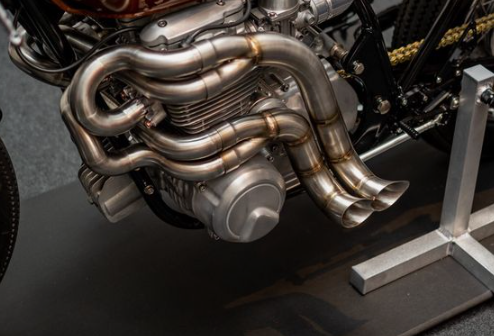Introduce:
When it comes to maximizing vehicle performance, understanding the complex components that make up an engine and exhaust system is critical. These components play a vital role in determining a car's power, efficiency and overall driving experience. In this blog, we delve into the world of automotive engine parts and exhaust systems, revealing their function and importance in enhancing vehicle performance.

Motor engine parts:
1. Piston and cylinder:
The heart of any engine lies in its cylinders and pistons. Pistons move up and down inside the cylinder, compressing air and fuel to enable the combustion process. Often made from aluminum alloys, these components need to work in perfect harmony to produce the desired power output.
2. Camshaft:
The camshaft controls the opening and closing of valves in the engine. The timing and duration of valve opening directly affects the efficiency and power of the engine. High-performance camshafts are designed to optimize airflow and fuel delivery, increasing overall engine performance.
3. Crankshaft:
It is the job of the crankshaft to convert the linear motion of the piston into rotary motion. The crankshaft is made of high-strength steel and is subjected to enormous forces as it transfers power from the pistons to the drivetrain. An upgrade to a lightweight and balanced crankshaft reduces rotating mass and improves engine response.
4. Turbochargers and superchargers:
Both turbochargers and superchargers increase the air intake to the engine, which increases power output. A turbocharger uses exhaust gases to spin a turbine, while a supercharger is driven by a belt connected to the engine. These forced induction systems enhance the performance of the engine, but careful tuning is critical to avoid undue stress on the motor.
Exhaust system:
1. Exhaust manifold:
The exhaust manifold collects the exhaust from each cylinder and directs it into a single pipe. It plays a vital role in smoothing the flow of exhaust gases and connecting the engine with the rest of the exhaust system.
2. Catalytic converter:
Catalytic converters help reduce harmful emissions by converting toxic gases into less harmful substances. These devices contain precious metal catalysts that promote chemical reactions to break down pollutants. Upgrading to a higher-flow catalytic converter enhances exhaust flow, which improves engine performance.
3. Muffler and resonator:
Mufflers and resonators are responsible for noise reduction in the exhaust system. The muffler uses sound-absorbing materials and sound-absorbing chambers to dampen noise and provide a quieter driving experience. Resonators, on the other hand, help to cancel specific frequencies, further reducing noise and improving overall performance.
In conclusion:
Understanding the intricacies of a car's engine parts and exhaust systems is essential for those seeking to improve vehicle performance. By understanding the function and importance of each component, you can make informed decisions when upgrading or maintaining your vehicle. Whether optimizing airflow, increasing power or reducing noise, engine components and exhaust systems work in harmony to enhance your driving experience. So go ahead and explore the possibilities and unlock your vehicle's true potential.
Post time: Aug-04-2023



